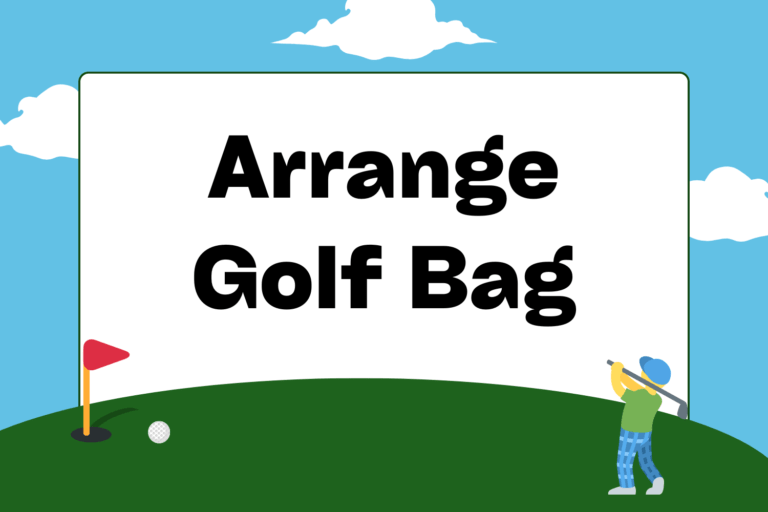Keeping score in golf is as easy as counting the number of times you hit the ball — the number of strokes you take. On top of your actual strokes, you have to add any penalty strokes you might have received. Combined, the number of total strokes at the end of your round of golf is your final score. The lower the number, the better.
That may sound simple enough, but what about all of those scoring terms, like par, birdie, and bogey? How do you read and fill out a scorecard? And what kind of penalties are we talking here? Read on, and you’ll find out.
Par
Every golf course is made up of a number of different holes. Most regulation golf courses are suited with 18 of these holes. When you hear the word “par” being used on a golf course, it can mean one of two things: par for the hole, or par for the course.
Well, what is par? Par is the number of strokes it should take a golfer to get his ball into the cup on that hole, as designated by the course’s designer. In other words, if a hole is labeled a par-5, that means you’ve got five shots to get the ball into the cup if you want to make par. If you take less than five shots to get the ball into the hole, that’s great! If you take more than five shots to get the ball into the hole, that’s fine too, but your score will be higher (worse) for it. Remember that penalty stokes count, too, so it’s your number of total strokes, not just the actual amount of times you hit the ball.
Par for Each Hole
On regulation golf courses, you’ll come across three different types of holes when it comes to par:
- Par 3: These are short holes, usually less than 200 yards. Try to hit the green in one shot, and take a couple of putts to make par.
- Par 4: These are medium length holes, usually between 250-450 yards. Hit a good drive into the fairway, and get your second shot onto the green from there.
- Par 5: These are the longest holes you’ll play, often more than 500 yards. If you’re a long hitter, you can try to get on the green in two shots, but most players will get there in three.
Par for the Course
The par for the course is simple to calculate. It’s just the par for each hole on the golf course added up. That means if an 18-hole course has 12 par-4s, three par-3s, and three par-5s, that golf course would have a par of 72.
Scores Above or Below Par
So what if your score on a particular hole is above or below the number for par? Well, that’s a big part of the reason keeping score matters. You want to know how well you did on a golf course, and you know that by relating your score to par.
For the Hole
Here’s a list of common scores relative to par for a specific hole:
- Birdie: One shot under par. For example, scoring a three on a par-4.
- Bogey: One shot over par. For example, scoring a six on a par-5.
- Eagle: Two shots under par. For example, scoring a three on a par-5.
- Double-bogey: Two shots over par. For example, scoring a five on a par-3.
Of course, these are just some of the possible scores you can have on any particular hole. After triple and quadruple bogeys, for instance, you can just start saying “five over” or “six over” for the hole. But with enough practice and practice, you won’t have many of those.
For the Course
After you’ve played the entire course, you’ll use your scorecard to add up your final score. Once you have your number of total strokes for the round, you can compare it to the golf course’s par. Here’s an example:
Say you’re playing an 18-hole course that has a par of 72. If you add up your score and shoot a 103, you can call your score by two different ways: by the actual number (“I shot a 103 out there”); or relative to par (“I shot 31 over par today,” or just, “31 over” for short).
Same goes for scores under par. If you shot a 68 on the same golf course, you could say, “I shot a 68,” or you could say “I shot four under.” If this is the case, go pursue a professional career!
The Scorecard
Every golf course has its own unique scorecard, but there are certain pieces of information that you’ll find on all of them. You’ll notice lots of words and numbers whose meanings you may not know. Be sure to check the guide, “How to Read a Scorecard” for more information on that.
For now, though, let’s focus on the basics of what you need to know in order to keep score for your round of golf.
It’s really simple, actually. The scorecard is set up so that you have room on the left side to write in your name and the names of anyone else in your group, one name per line.
Moving to the right, you’ll notice a space for each golfer’s score under every hole on the course. Usually a scorecard has room for nine holes on one side of the card. If you’re playing an 18-hole course, you can add up each “side” of nine holes — “in” after the first (front) nine holes, and “out” on the back nine holes, which can be found on the other side of the scorecard. At the end of 18 holes, you can add up the “in” and “out” scores for your final score.
Each hole will have its par listed below it, so you can know what score to aim for before you tee it up. At the end of each side of the scorecard, you’ll see the par for each side of nine holes, and at the end of the scorecard, you’ll see the par for the course.
Simply add up your scores for each hole, and you’ve successfully kept score!
Common Penalty Strokes
The rules of golf are not a quick read. There are tons of rules that, if broken, result in stroke penalties, which add to your score. For a comprehensive list of rules, see the Official Rules of Golf.
However, there are some common penalties that you might run across that should be listed here. Below are just some of the rules you should be mindful of, and the penalties that come with them:
- Water hazards: If your ball drops in a lake, pond, creak, river, ocean — or any water that’s been deemed by the course as a hazard — you have to add two strokes to your score, and drop a new ball into play. For example, if you hit your first shot into the water, you can think of it this way: The first shot went into the water, the second stroke was putting a new ball into play, and so now you’re hitting your third shot.
- Out of bounds: Same penalty as water hazards (two strokes). The difference here is that if you hit your ball out of bounds, you have to play your next shot from the same place from which you hit your last shot.
- Grounding your club in a hazard: If your ball lands in a hazard, but you can still play it (think sand traps, shallow water, etc.), you don’t automatically get any penalty strokes. However, you’re not allowed to put your club onto the ground before you hit the ball when you’re in a hazard, so be careful! Grounding your club in a hazard is a two stroke penalty.
- Accidentally (or intentionally) moving the ball: Whether you touch the ball with your club accidentally (unless you’re on the tee) or if you move the ball with your hand or by trying to remove something from around your ball, if it moves, you’ve got to take a one stroke penalty.
- Whiffing: If you set up to the ball and take a swing, even if you miss the ball, you’ve technically taken a stroke (one stroke penalty). Make sure you take your practice swings away from your golf ball to avoid this penalty.
The Importance of Honest Scorekeeping
Keeping score in golf is one of the most objective ways to judge your improvement. If you’re not honest in your scorekeeping, you’ll never be able to tell how much better you’re getting at a tough game. It’s so important to keep the right score, in fact, that if you sign an incorrect scorecard in tournaments, you’ll either be stuck with that score (if the score is wrongfully higher than your actual score), or disqualified (if the score is lower than your actual score). Most importantly, though, keeping your correct score is part of being a good sport and a good golfer, so do your best!





